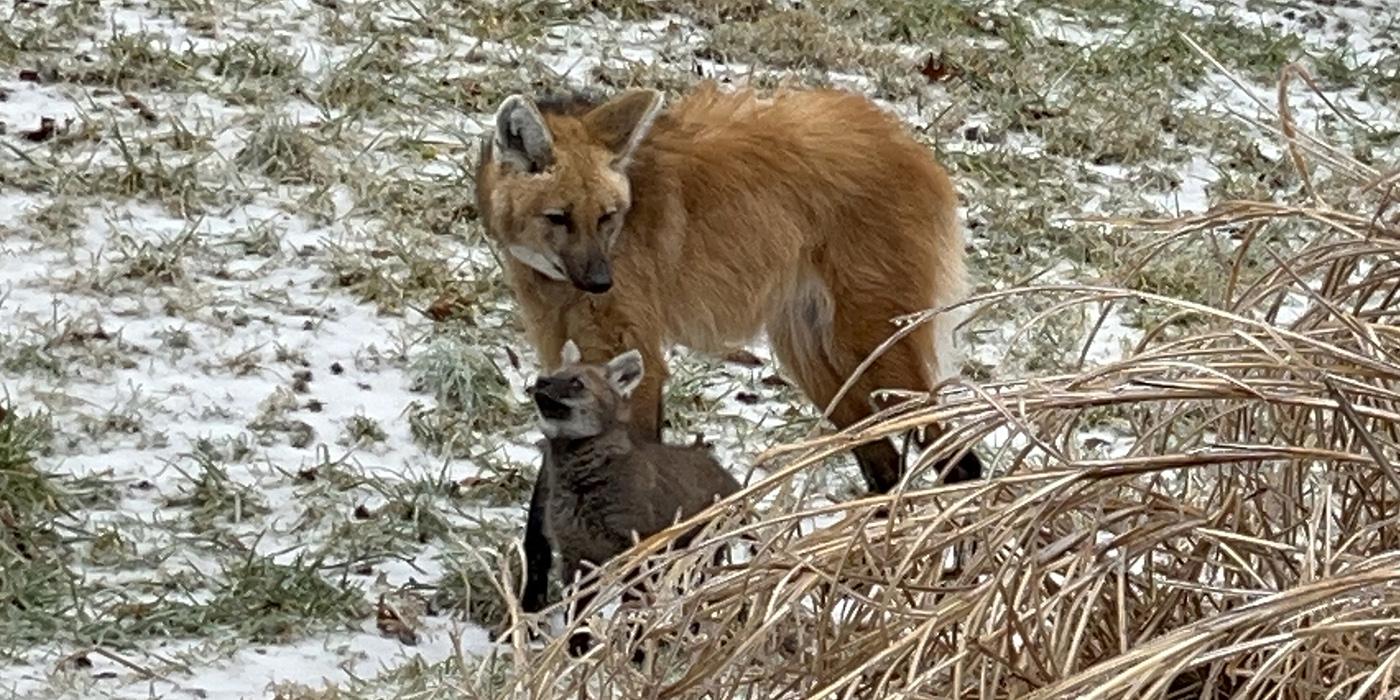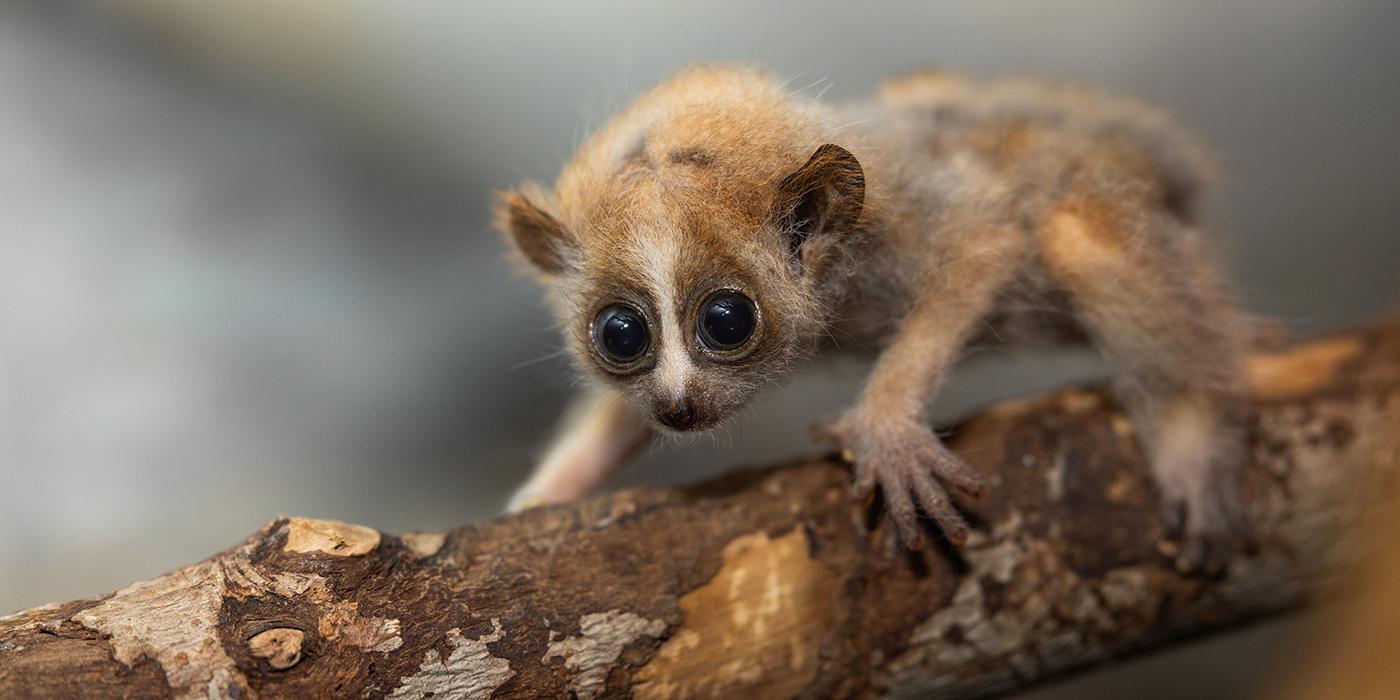A Cheetah Cub Check-in
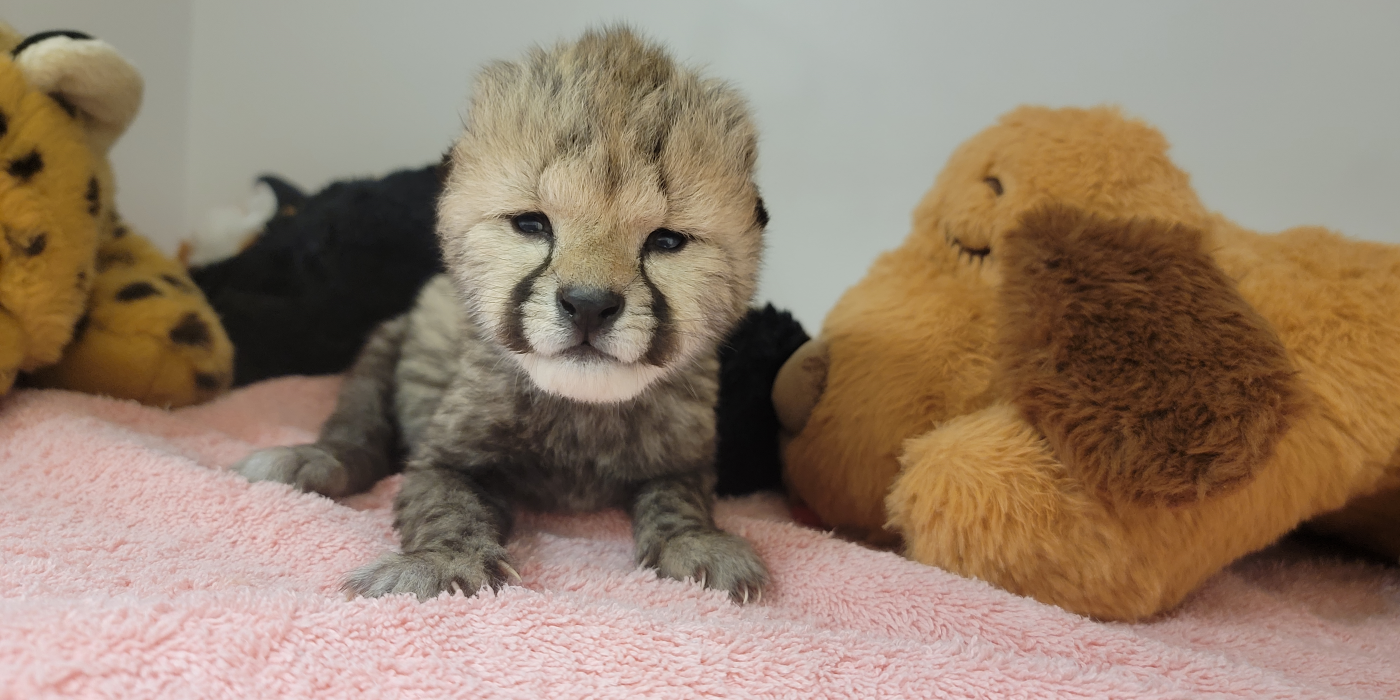
Animal care staff at Smithsonian Conservation Biology Institute notes the one-week-old cheetah cub they are currently hand-raising has a good appetite!
Get an inside look at the one-week-old cheetah cub animal care staff at Smithsonian Conservation Biology Institute are currently hand-raising in this #Cubdate Q&A with biologist Adrienne Crosier.
How is the cub doing?
He is doing very well! He spends most of his time sleeping and eating but has started to become more active and mobile. He is a good eater and weighed in at a healthy 634 grams, or just under a pound and a half. He’s a little larger than a Beanie Baby stuffed animal.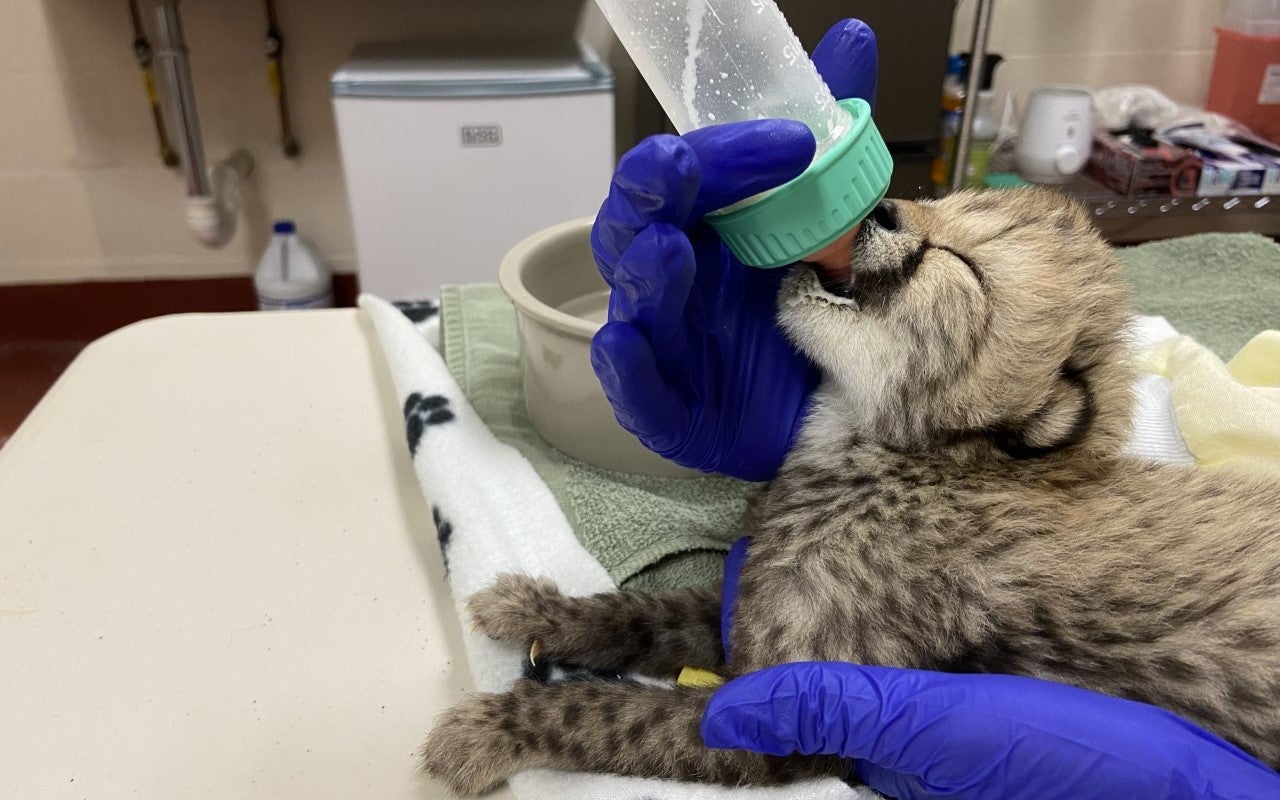
What do you feed the cub?
We are feeding him a special, commercial formula recommended by the Species Survival Plan (SSP) for hand-rearing cheetah cubs. Other breeding centers have had great success with it and the SSP’s vets and nutrition advisor have assessed it carefully.
We weaned him onto the formula. His mom, 7-year-old Sukiri, nursed him over his first night before abandoning him the next morning. When we brought him in, we diluted the formula with water so his system could adjust to the different substance. We started with half formula, half water. The next day we gave him 75% formula, and by his third day he was eating 100% formula.
In the future, we hope to make use of our milk bank. The National Zoo’s Department of Nutrition Science has the world’s largest animal milk repository, but there have not been enough cheetah milk samples collected for a formula to be created. Most large cats will not tolerate the hands-on contact needed to collect the samples. A rare exception to this was the birth mother to the first two cheetah cubs born via embryo transfer in 2020. Hopefully we will be able to collect more samples in the future.
How often do you feed him?
At one week old, we feed him eight times a day, or every 3 hours on average. This weekend we will go to seven times a day. We watch our cheetah cubs nurse very closely from den cameras, but its impossible to track exactly how often they nurse when they’re with their mom. On top of the challenge of identifying individuals on the cam, cheetah cubs will ‘nurse sleep’. The same happens when we hand-rear cubs: I will be feeding the cub and he will randomly doze off with the bottle in his mouth. Then he will wake up for a few more minutes and nurse before falling back to sleep again. It is very cute.
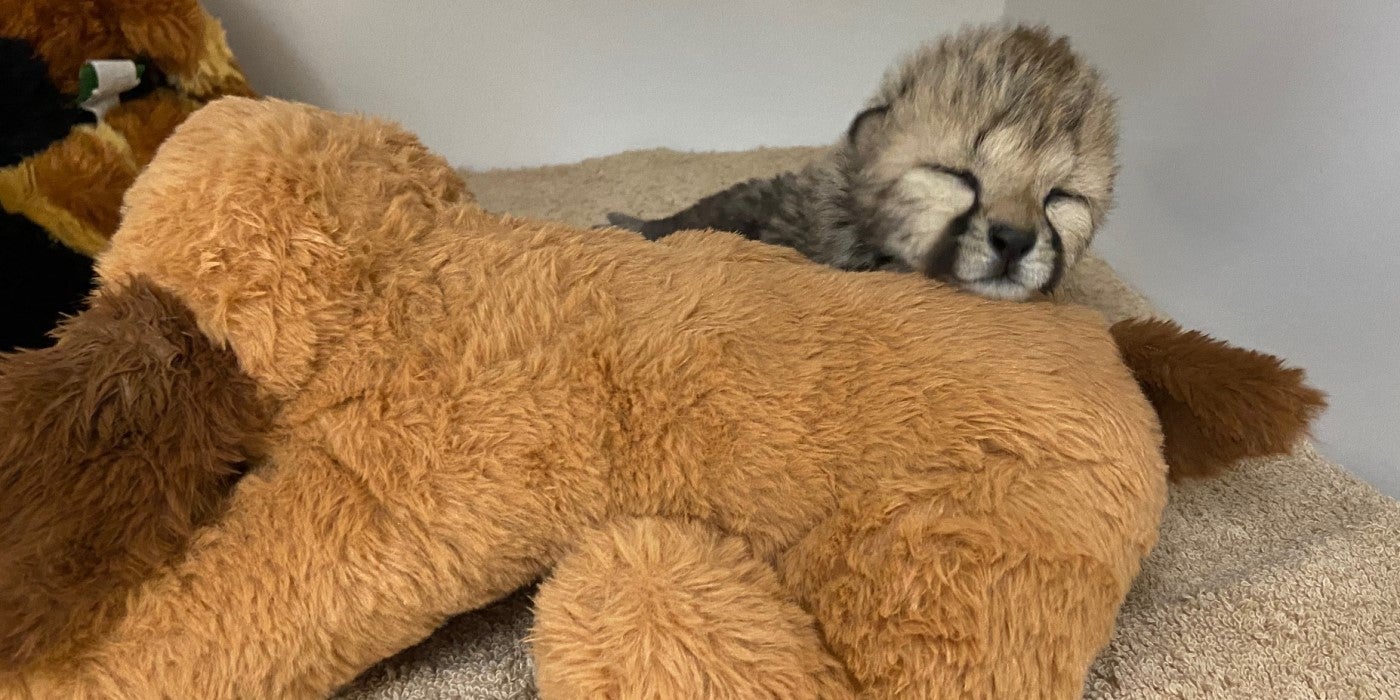
How are you preparing the cub for a foster mom?
It is important for any cub to learn to be a cheetah from other cheetahs. We are hoping to introduce him to a female cheetah at another AZA-accredited zoo who is set to give birth in the coming weeks. In the meantime, we do not want him bonding with any of the keepers. However, we are doing our best to mimic what a mother cheetah would do.
We stimulate him to defecate. After a nursing session, we take warm, wet cotton balls and wipe him down like a mother would clean him. We even placed stuffed animals in his incubator to mimic having other cubs around him while he sleeps. Most recently, we got him a special plush dog that has a battery powered “heartbeat.”
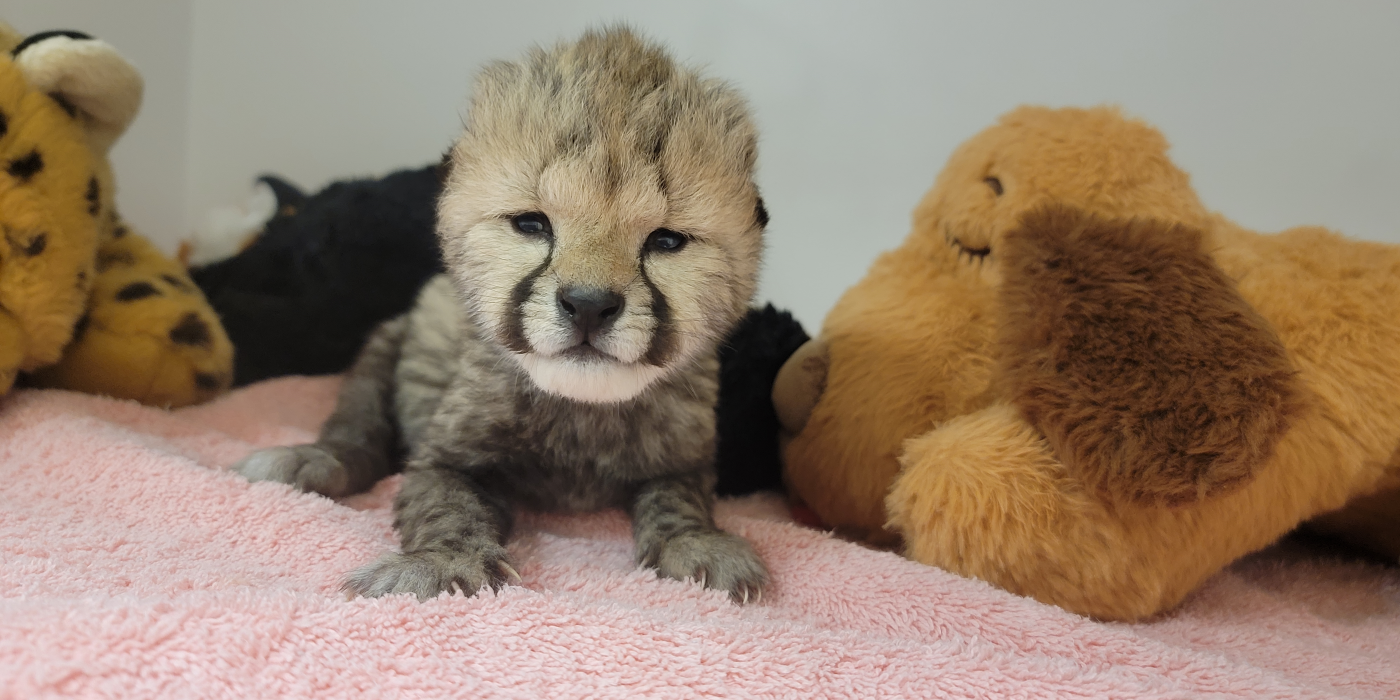
Has the cub reached any milestones?
Yes, his ears have just started to open! Cheetah cubs are born with their ears and eyes shut. I recently noticed him starting to react to some sounds. His eyes opened around his seventh day. He should be able to see some basic shapes. He will likely start recognizing and reacting to some items, like people and the bottle.
How is Sukiri doing?
Sukiri is doing just fine. Because she abandoned the cub, as a wild cheetah would, we didn’t expect to see any different behavior. She is acting normal, and we hope to breed her again in the spring.
Related Species:
